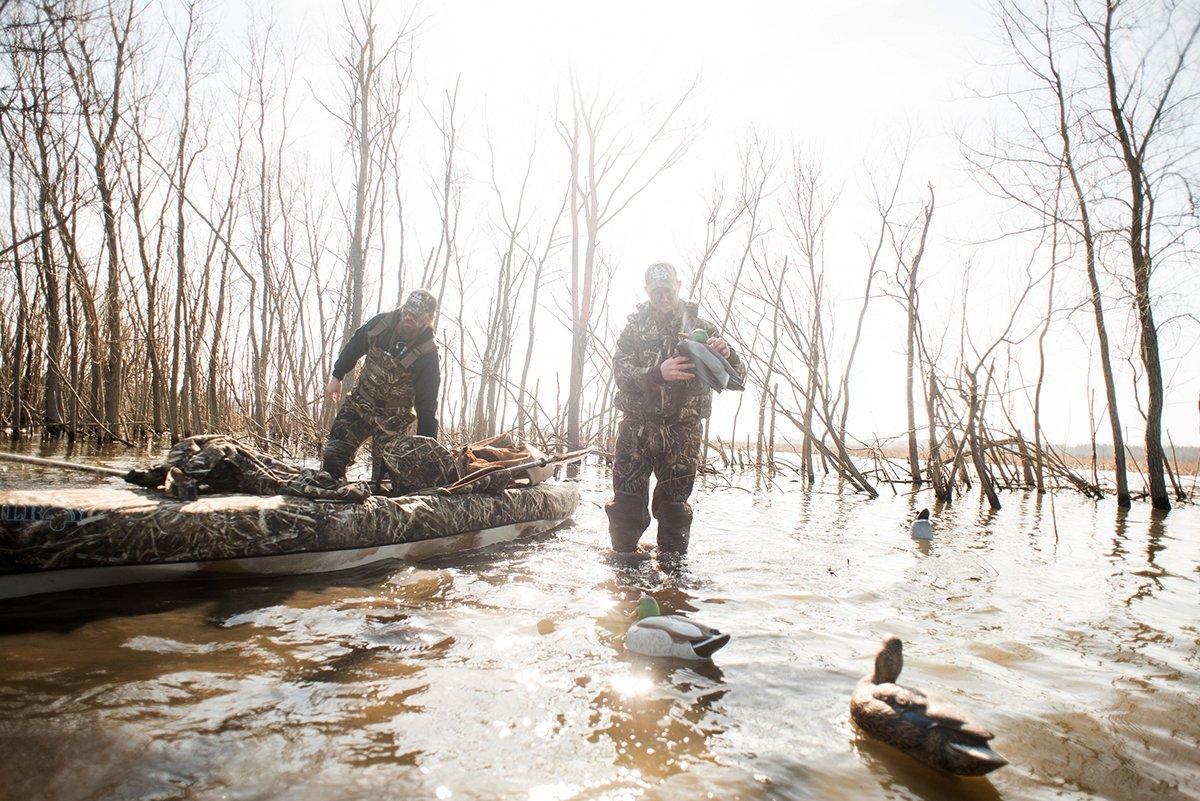Delta Waterfowl: Dry Spring Conditions Affected Waterfowl Distribution
North America's spring breeding duck population decreased in 2018, but Delta Waterfowl said the overall picture remains positive.
The 2018 Trends in Duck Breeding Populations report, released Monday, and based on surveys conducted by the U.S. Fish and Wildlife Service and Canadian Wildlife Service, estimated the 2018 breeding duck population at 41.19 million, a 13 percent decrease from the 2017 population of 47.27 million but still 17 percent higher than the long-term average. The 2018 survey marks the lowest total breeding duck population estimate since 2010. The United States and Canada have conducted the surveys since 1955.
The breeding population decreased but remains quite strong, with most species remaining near or above long-term averages, Dr. Frank Rohwer, president and chief scientist of Delta Waterfowl, said in a press release. Ducks declined due to dry conditions in large portions of the breeding grounds. Fortunately, we continue to benefit from carryover birds hatched during highly productive springs over the past several years.
Mallards decreased 12 percent to 9.26 million but remain 17 percent higher than the long-term average. Blue-winged teal dropped 18 percent to 6.45 million, 27 percent higher than the long-term average. Gadwalls declined 31 percent to 2.89 million, 43 percent higher than the long-term average. Green-winged teal decreased 16 percent to 3.04 million, 42 percent higher than the long-term average. Northern shovelers declined 3 percent to 4.21 million, 62 percent higher than the long-term average. Redheads dropped 10 percent to 1 million, 38 percent higher than the long-term average. Canvasbacks decreased 6 percent to 686,000, 16 percent higher than the long-term average. Wigeon were the only index species that increased, jumping 2 percent to 2.82 million, which is 8 percent higher than the long-term average.
Scaup (bluebills) and northern pintail numbers also decreased, and those populations are lower than long-term averages. Pintails declined 18 percent to 2.37 million, which is 40 percent lower than the long-term average. Scaup (lesser and greaters combined) decreased 9 percent to 3.99 million, or 20 percent lower than the long-term average.
Bluebills are drifting dangerously close to a return to restrictive harvest regulations, Rohwer said in the release. And the pintail number is disappointing. We'd hoped that good wetland conditions across Montana and portions of southern Alberta and southeastern Saskatchewan would be enough to give pintails a boost. That was clearly not the case.
Indexes in the Eastern Survey Area showed similar annual decreases, but many species were lower than long-term averages. Mallard numbers decreased 4 percent and were 15 percent lower than the long-term average. Black ducks dropped 9 percent and were 20 percent lower than the long-term average. Ring-necked ducks increased by 2 percent but remained 10 percent lower than the long-term average. Green-winged teal, goldeneyes and mergansers decreased by 1 percent, 13 percent and 4 percent, respectively. Greenwings were 9 percent lower than the long-term average, and goldeneyes were 17 percent below the long-term average. Mergansers remained 8 percent higher than the long-term average.
Across the United States and Canada, the May 2018 pond count was 5.23 million, which was 14 percent lower than in 2017 but at the long-term average. Pond counts in prairie and parkland Canada — which covers Alberta, Saskatchewan and Manitoba — decreased 15 percent to 3.66 million but remained 4 percent higher than the long-term average. Pond counts in the north-central United States, which covers Montana and the Dakotas, declined 11 percent to 1.57 million, 8 percent lower than the long-term average.
The pond count has been above — in some cases way above — the long-term average for many years, and we've enjoyed huge duck estimates as a result, Rohwer said in the release. This year, the count is average and, in some cases, well below average.
Dry conditions in the eastern Dakotas, where ponds decreased by 32 percent, and southern Saskatchewan, where they dropped 21 percent, affected duck distribution this spring.
Dry conditions across many areas of the prairies don't bode well for duck production, Rohwer said in the release. However, timely rains in during nesting season, particularly in North Dakota, certainly aided duck production in some regions.
After the May surveys, habitat conditions became even more variable, forcing ducks to further compete for breeding habitat and decreasing their odds of nesting success. Rohwer said that might affect waterfowl seasons, as hunters shoot the fall flight, which includes mostly yearling birds, not the breeding population.
There will be plenty of ducks in the fall flight, but unlike years when there are plenty of easily decoyed juveniles, hunters can expect savvy adult birds, he said in the release.
Click here for more Realtree waterfowl hunting content. And check us out on Facebook.







